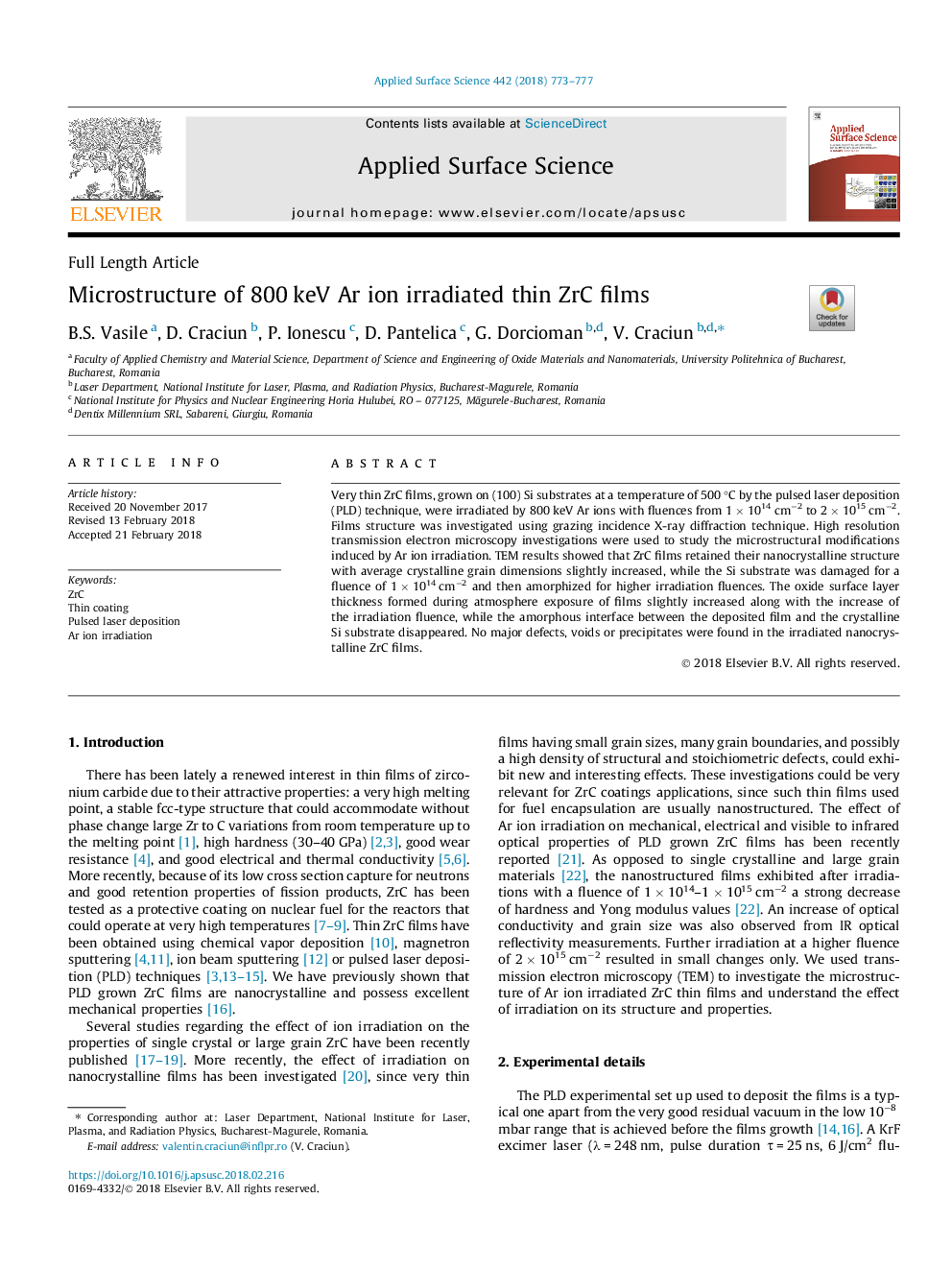| Article ID | Journal | Published Year | Pages | File Type |
|---|---|---|---|---|
| 7835088 | Applied Surface Science | 2018 | 5 Pages |
Abstract
Very thin ZrC films, grown on (100) Si substrates at a temperature of 500â¯Â°C by the pulsed laser deposition (PLD) technique, were irradiated by 800â¯keV Ar ions with fluences from 1â¯Ãâ¯1014â¯cmâ2 to 2â¯Ãâ¯1015â¯cmâ2. Films structure was investigated using grazing incidence X-ray diffraction technique. High resolution transmission electron microscopy investigations were used to study the microstructural modifications induced by Ar ion irradiation. TEM results showed that ZrC films retained their nanocrystalline structure with average crystalline grain dimensions slightly increased, while the Si substrate was damaged for a fluence of 1â¯Ãâ¯1014â¯cmâ2 and then amorphized for higher irradiation fluences. The oxide surface layer thickness formed during atmosphere exposure of films slightly increased along with the increase of the irradiation fluence, while the amorphous interface between the deposited film and the crystalline Si substrate disappeared. No major defects, voids or precipitates were found in the irradiated nanocrystalline ZrC films.
Related Topics
Physical Sciences and Engineering
Chemistry
Physical and Theoretical Chemistry
Authors
B.S. Vasile, D. Craciun, P. Ionescu, D. Pantelica, G. Dorcioman, V. Craciun,
